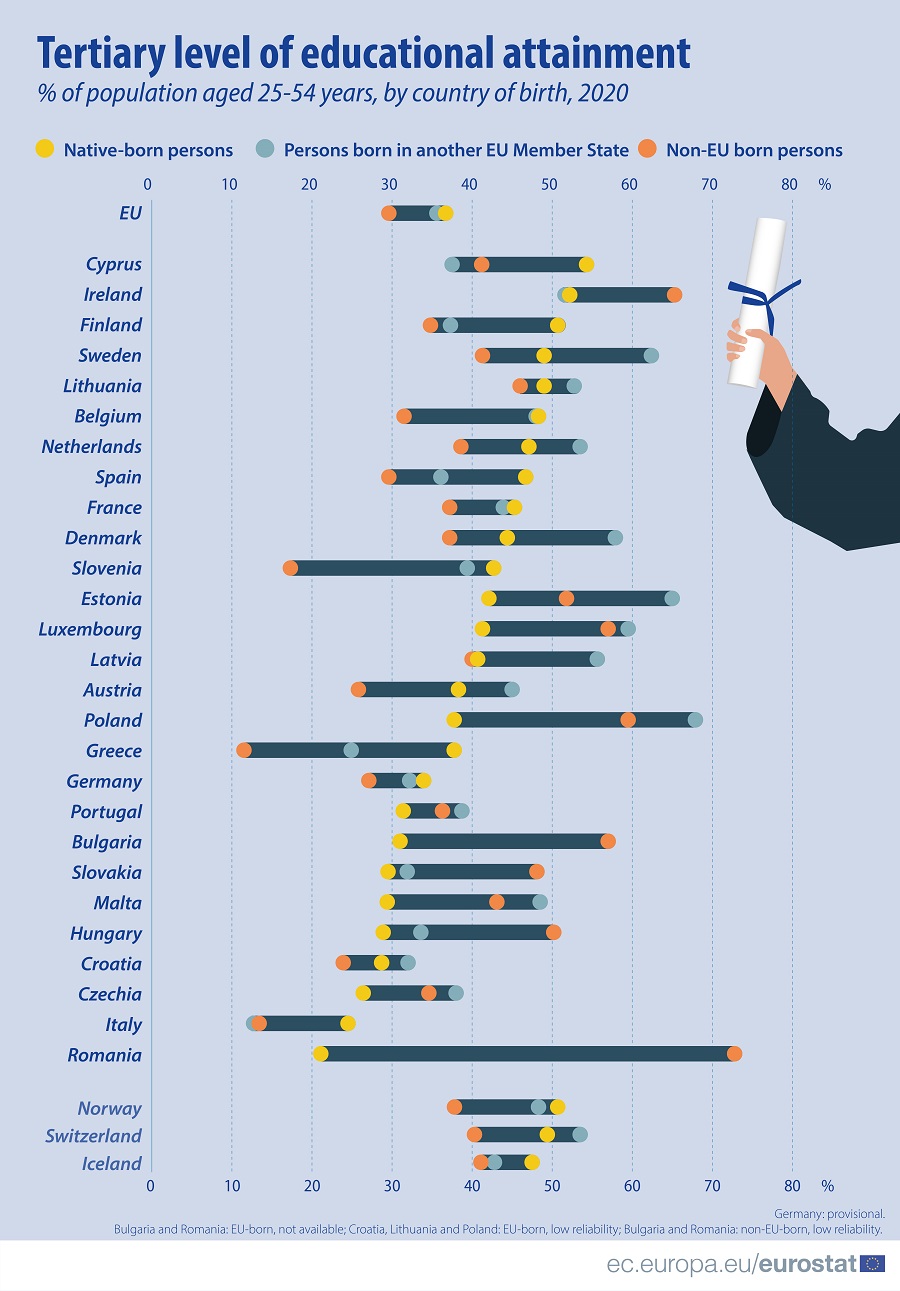The European Union’s statistic agency Eurostat revealed that in 2020, over one third (35.6%) of migrants aged 25-54 who were born in another EU Member State had a tertiary level of education whereas the rate was lower for migrants born outside the EU (29.6%).
Eurostat said 72.8% of migrants born outside the EU had a tertiary level of education in Romania, followed by Ireland (65.3%) and Poland (59.5%). On the other end of the scale, in Italy, 12.7% of migrants from another EU Member State had a tertiary level of education followed by Greece (24.9%), according to a press release.
The data shows that Greece (11.5%), Italy (13.4%) and Slovenia (17.3%) had the lowest percentage of the non-EU population with a tertiary level of educational attainment.
According to the Eurostat report, the share of the tertiary-educated population living in their country of birth was 36.7% and among the Member States for which data are available for 2020, Poland’s migrant population aged 25-54 born in another EU Member State had the highest share of completed tertiary education (67.9%), followed by Estonia (65.0%) and Sweden (62.4%).
For the native-born population, the highest share of those with tertiary education in 2020 was recorded in Cyprus (54.3%), and the lowest share in Romania (21.1%).
The share of the population in the EU with tertiary education was higher among women than among men.
The biggest gender gap was recorded for the native-born population, where the share of women with a tertiary level of education stood at 40.6% compared with 32.9% for men (a gap of 7.7 pp), while this gender gap stood at 5.0 pp between persons born elsewhere in the EU and 4.1 pp between persons born outside the EU.



